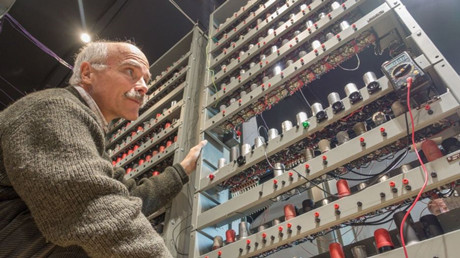Think of a shed and objects like spades, forks and compost in a wooden hut at the end of the garden come to mind.
However, in the UK, some very old hardware is being brought back to life in some of those scruffy, but often well-organised, workspaces. In them, a group of veteran engineers is toiling to help recreate the pioneering Edsac computer.

Designed by Sir Maurice Wilkes, Edsac first ran in 1949 and was made to serve scientists at the University of Cambridge. It helped them push the boundaries of their disciplines by giving them a tool that could crunch numbers faster than they could ever manage. "The problems they were tackling were not practical using hand-based calculation methods," said James Barr, one of the veterans reconstructing the Electronic Delay Storage Automatic Calculator. Edsac quickly proved its usefulness and helped two Cambridge scientists win Nobel prizes. Instruction set
But while the science was meticulously recorded, the building of Edsac was not. "Wilkes was exposed to electronics and valves during his wartime work on radar and to the mercury delay lines it used for memory," said Mr Barr. "He had the technology in his head that he thought he could realise." Wilkes' design for Edsac have been largely lost and, even if they could be found, that might not have helped because the machine changed as it was being built.
"It took me a year to understand its five-bit order code," said Mr Barr. But understand it he did and his insights, along with those from fellow engineers who have worked on other key parts of the machine, has helped the project recreate Edsac's innards.
Which is where the sheds come in.
Those logical parts are being turned into hardware, known as chassis, in sheds and attics up and down the country. This has involved huge amounts of work as Edsac is built of 140 chassis spread around a series of tall racks. Each one is about 80cm long by 60cm wide, studded with valve sockets and stands in front of a spider's dream of wiring. "The practical reality is that the construction effort is quite significantly painstaking and it takes 20 to 40 man hours per chassis," he said. This wiring work is so mentally draining that Mr Barr and his fellow volunteers can only work on a chassis for a couple of hours at a time. "I didn't know what I was getting into when I volunteered but I've loved it," said Mr Barr, who got involved after seeing a poster about the Edsac reconstruction when visiting The National Museum of Computing at Bletchley Park.

No comments:
Post a Comment